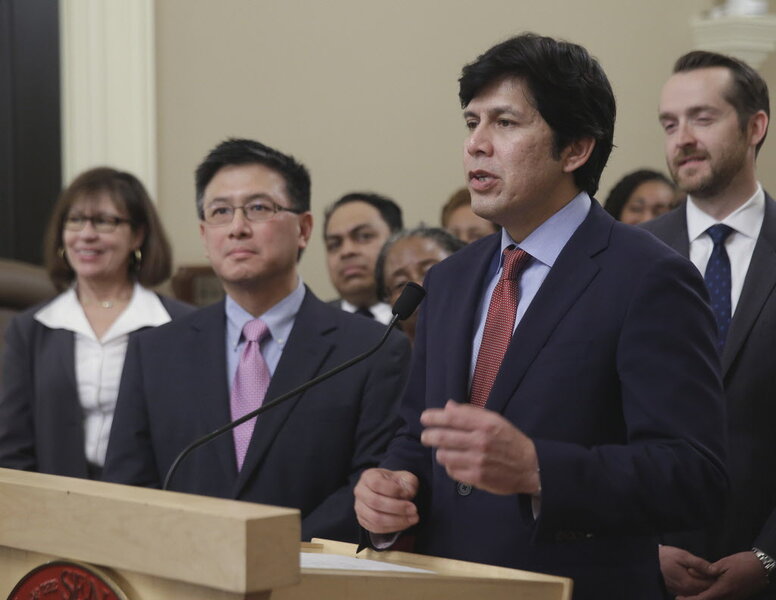How California wants to help workers save for retirement
Loading...
Millions of workers in California may be one step closer to getting more retirement savings coverage.
On Monday, California State Treasurer John Chiang and Senate Pro Tem President Kevin de León (D-Los Angeles) met with the California Secure Choice Board to urge state approval of a state-organized retirement plan, also called Secure Choice, that would automatically enroll certain private-sector employees in a state-backed 401(k) plan if they don’t get one from their employers. If approved by lawmakers and Gov. Jerry Brown later this year, Californians could expect to see the Secure Choice program in place by January 2017.
In a press release, Treasurer Chiang said,“There are people threatened with not only being left behind but who will almost surely suffer the slight of poverty in their post-employment years unless we make it possible for them to start saving now. These are restaurant and agriculture workers, retail store clerks and bicycle shop mechanics, among others, who are not employed by businesses large enough or fortunate enough to offer such plans.”
An estimated 7.5 million Californians work for an employer who does not offer a retirement plan, according to the California Treasurer’s Office. Secure Choice would apply to employees who work at businesses with five or more employees and are not provided with a retirement plan by their employer. These employees would be automatically enrolled in Secure Choice, but also have the option to opt out. Employees would not have to switch retirement accounts if they changed jobs; the Secure Choice account would stay with them for the duration of their career.
Employees would be expected to contribute between three to five percent of each paycheck to the account, with the option to contribute more if they wish. Investment plan options would be limited, with employees who don’t want to make a choice automatically put into a plan. The cost of participation in the plans is a small fee that would be paid out of employees’ payroll contributions. The Secure Choice Board has not yet made a decision on how it will handle employees needing to take money out of their retirement savings in an emergency.
The Secure Choice law is intended to create minimal hassle for employers. They would merely have to enable their employees to make automatic contributions to a Secure Choice account and perform other, minor tasks, including informing their employees about the program. Employers would not be held responsible for whether or not their employees choose to participate in Secure Choice.
The conversation in California about retirement savings coincides with a shift in the national dialogue, as lawmakers examine benefit programs that aren’t tied to one particular employer.
Secure Choice is very similar to myRA, a retirement savings program that was introduced by the Obama Administration in November 2015. Like Secure Choice, myRA, which stands for “my Retirement Account,” is intended for people who don’t have access to a retirement plan at their job. But while myRA is billed as a starter savings account where people can begin saving for retirement before gradually progressing to a different fund, it appears that the Secure Choice program is intended to have durability throughout a worker’s career.






